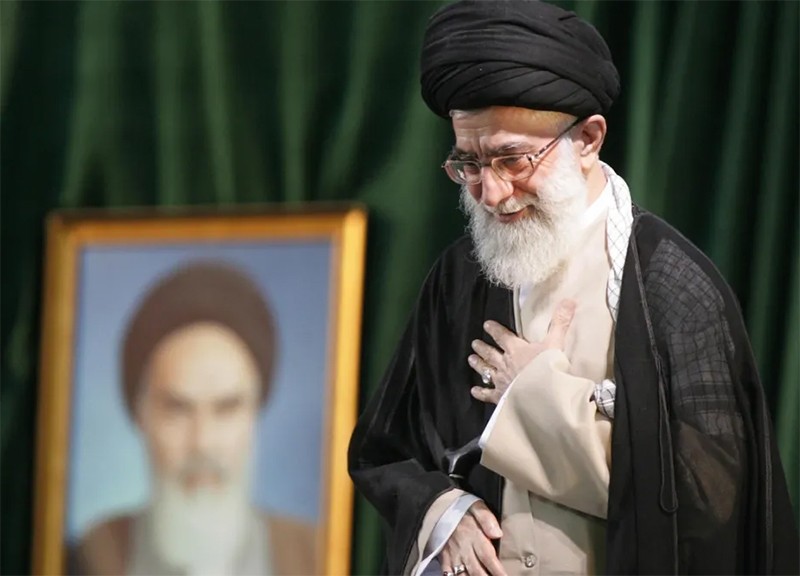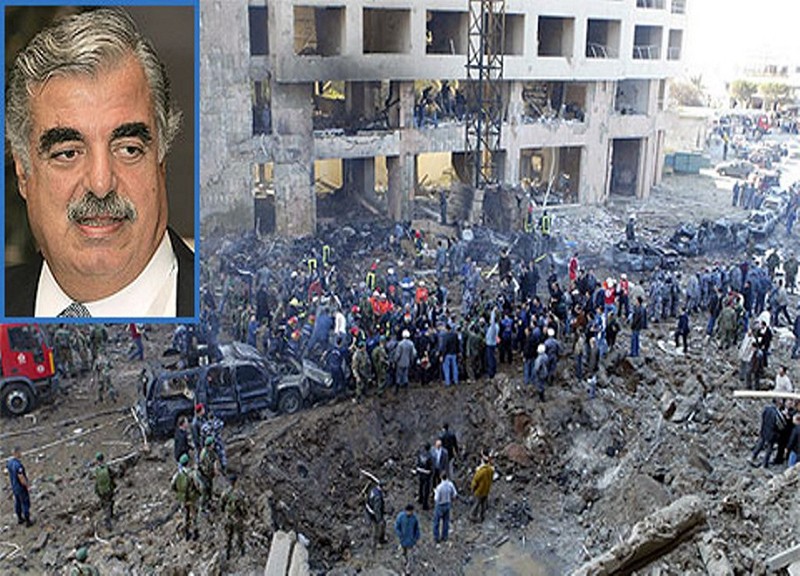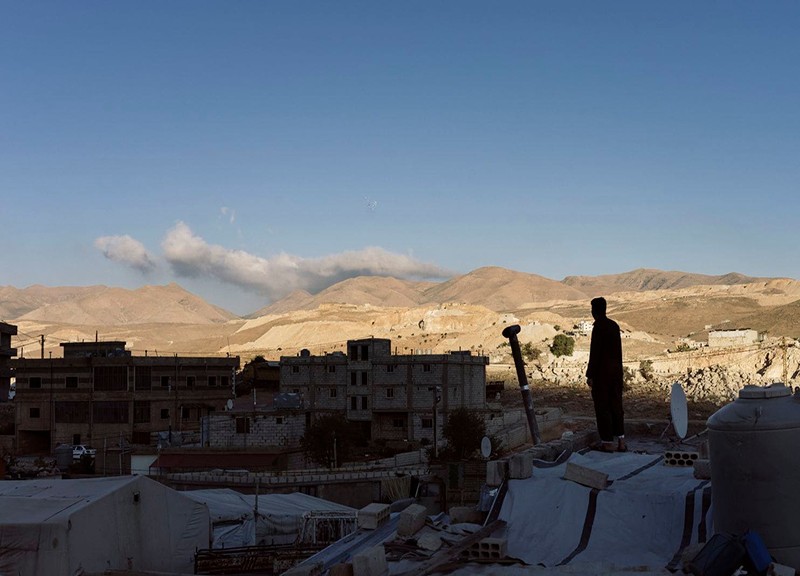
Tehran was trying to showcase its strength, but it betrayed its strategic limitations.
By Afshon Ostovar, an associate professor of national security affairs at the Naval Postgraduate School and the author of Vanguard of the Imam: Religion, Politics, and Iran’s Revolutionary Guards. Foreign Policy
Since the Israel-Hamas war began, Iran and its archipelago of proxies have steadily advanced a collective campaign against Israel and U.S. forces in the Middle East. That campaign—which has included Hezbollah’s strikes into northern Israel from Lebanon, the Houthis’ attempted blockade of shipping through the Red Sea from Yemen, and near-daily rocket attacks by Shiite militias on U.S. forces in Iraq and Syria—has threatened to drag the United States into an expanding conflict. With its recent missile strikes on three neighboring states, Iran signaled a potential new phase in the evolving turmoil, one that seemingly inched the Middle East closer toward a regionwide war.
In those attacks, Iran was attempting to showcase its military strength and resolve. Yet, it also betrayed something else: Iran’s inherent weakness and strategic limitations.
On Jan. 16, using a combination of ballistic missiles and drones, Iran struck targets in Syria, Iraq, and Pakistan that its officials claimed had been associated with Israeli intelligence and anti-regime terrorist groups. The assaults were ostensibly in response to the suicide bombing attacks in the southern city of Kerman earlier this month, which killed at least 84 Iranians.
Although the Islamic State claimed responsibility for that carnage, which hit a crowd commemorating Islamic Revolutionary Guard Corps (IRGC) Maj. Gen. Qassem Suleimani, who had been assassinated in a U.S. drone missile strike four years earlier, Iranian officials also blamed Israel and the United States.
In its brazen response, the IRGC launched a barrage of ballistic missiles and drones that struck buildings in northwestern Syria, destroyed the villa of a prominent Kurdish businessman in Erbil, Iraq, who Iranian officials implied was an Israeli asset, and hit the mudbrick house of a Baluch family in the rural Pakistani town of Koh-e Sabz, which Iranian officials claimed was linked to the anti-regime Jaish al-Adl (Army of Justice) terrorist group. The actions showcased Iran’s refined missile capabilities and underscored that Tehran could violate the sovereignty of neighboring states at will and free of meaningful consequence.
Although not much has been confirmed about the strikes in Syria, which hit a rebel-held area, Iraqi and Pakistani officials reported that the strikes in their countries hit family homes and killed at least six innocent civilians, including two young girls and an infant. For Iran’s leaders, the victims mattered less than the demonstration effect of the act. Iran’s choice of retaliation was designed to send a clear message to its enemies, and to Israel and the United States in particular: Any aggression against Iran will be met with quick and severe retaliation.
A willingness to respond to its enemies through missile attacks against neighboring states is something Iran has steadily showcased. In 2019, Iran struck Saudi Arabian oil facilities with cruise missiles and drones in retaliation for Riyadh’s support for the Trump administration’s pressure campaign on Iran. In 2022, in response to a series of sabotage attacks inside Iran linked to Israel, the IRGC launched a missile salvo that destroyed a Kurdish compound in Erbil that Iranian officials claimed had been used by Mossad to plan operations inside Iran.
More provocatively, Iran countered the assassination of Suleimani with a missile barrage against U.S. forces stationed at Iraq’s Ayn al-Assad air base in January 2020. That attack could have easily resulted in a shooting war with the United States, and had it not been for the mercurial decision-making of former President Donald Trump and the IRGC’s downing of Ukraine Air Flight 752 with an anti-air missile after mistaking it for a U.S. missile in the immediate aftermath of the attack, it may have. Yet, in all of those attacks—none of which were lethal, other than the downed flight—Iran incurred no military retaliation. The lack of responses emboldened Iran’s behavior and helped secure its policy of retaliation as a viable option.
Iran’s recent strikes were similarly designed to remind its foes that is has both the will and capabilities to escalate. Its missiles are accurate and can be deployed against targets anywhere in the region. Yet, while Iran may have succeeded in messaging resolve and ability, it did so by attacking straw men. Even though it blamed Israel and the United States for the suicide bombings in Kerman, it did not retaliate against either. And despite its vocal support for the people of the Gaza Strip, Iran did not attempt to use its military power for their benefit.
Instead, Iran fired ballistic missiles against isolated family homes—not military targets—in weak states. Iran chose actions against countries that it calculated would not seek to impose meaningful consequences or serious escalation.
Syria’s government did not acknowledge Iran’s attack, and because the missiles fell in rebel territory, it probably supported the effort. Iraq’s government, which is controlled by politicians close to Iran, was outwardly embarrassed and troubled by Iran’s actions and moved to take modest action by recalling its ambassador and issuing a diplomatic démarche in protest. However, because of Iran’s outsized influence among Iraq’s heavily armed Shiite militias and within Iraqi officialdom, Baghdad was in no place to do much more.
Pakistan was the only state in a position to reply to Iran’s aggression with anything other than words. Beyond withdrawing its ambassador from Tehran and barring Iran’s envoy from the country, Pakistan’s military promptly launched airstrikes against Baluch dissidents in Iran. But after matching Iran’s actions in a tit-for-tat exchange that killed at least 11 civilians and left smoking ruins in residential neighborhoods in both countries, Pakistan’s government issued a statement calling Iran a “brotherly” country and sought de-escalation. As Iran’s leaders assuredly predicted, Pakistan had no appetite to prolong hostilities, which meant that Iran’s actions were once again likely to escape significant ramifications.
Iran has therefore become adept at—but also reliant on—posturing for its deterrence. That is because, despite its military’s regional prominence, Iran lacks the power to take the fight to its enemies or clash with more powerful adversaries head-to-head. Even in the wars in Syria and Iraq, where the IRGC was heavily involved, Iran-led forces struggled in both conflicts until Russia and the United States intervened. It was under the umbrella of Russian air power that Iran-backed forces were able to turn the tide against Syria’s rebels, and it was the U.S.-led coalition (including Iraqi military and Kurdish forces) that was chiefly responsible for defeating the Islamic State in both Syria and Iraq.
Iran possesses impressive missile and drone capabilities, but those capabilities can only achieve so much. Relative to some of its neighbors, Iran’s air force is weak and relies on outmoded, Cold War era platforms such as the F-4 Phantom. Iran’s ground forces are more formidable, but they are strongest in defense and cannot easily take or hold territory beyond Iran’s borders.
Iran’s Shiite militia proxies are similarly limited. They are most effective when acting as insurgents in their home territories or as political spoilers. Unless they’re given a permissive environment in which to operate or backed by a more powerful foreign military force, such as in Syria, they are not adept at conventional operations. They can set up roadside bombs, fire mortars, launch missiles and drones, kidnap and kill local rivals, and engage in ambush attacks, but not much more.
Such tactics can still be effective, primarily because they are difficult for foreign state militaries to counter without committing to lasting campaigns and employing significant force. The effort waged by Shiite militias against U.S. forces in Syria and Iraq is a good example of this. Even though the United States has retaliated at times with limited strikes, it has been largely hesitant to respond to the more than 120 rocket attacks against U.S. forces conducted by Iran-backed militias since October. That is because there is no simple way to deal with those militias without fighting them directly, and doing so would not only drag the United States into another Middle East war, which would undoubtedly be unpopular in U.S. domestic politics—it would also jeopardize ongoing U.S. efforts against the Islamic State as well as relations with Iraq.
The Iraqi government’s response to a recent U.S. strike that killed a militia commander in Baghdad, which seeks to end the U.S. military presence in the country, is illustrative of the political sensitives limiting U.S. actions. The Houthis in Yemen are using a similar strategy in their attempt to blockade shipping through the Red Sea. Again, relying on missiles and drones, the Houthis are willing to tolerate limited blowback from the United States because they can reasonably assume that the United States doesn’t want to fight a war in Yemen, and therefore will not commit enough resources and firepower to meaningfully endanger the Houthis’ control of their home turf. The Houthis are willing to absorb some losses because they view that the political upside of their effort outweighs the risks.
The same is true for Iran and its other proxies, which is why they keep pushing. They hope to ensnare the United States in an unwinnable situation, one that may eventually prompt Washington to see more value in simply walking away from its military commitments in the region rather than obligating more resources to preserve the status quo.
Iran’s proxies can risk limited blowback from the United States and Israel because they have very little to lose. Iran, on the other hand, would have much more to lose if it were to spark a direct conflict with the United States or Israel. Iran could not, for example, replicate the Houthis’ shipping blockade effort in the Strait of Hormuz. It could try, but the risk of sparking direct escalation with the United States, much less the strain that it would place on relations with China and its neighbors, would present significant risk.
Seeking to reduce risk is why Iran outsources much of the violence to its clients—and why its clients have taken the lead in military action against foreign adversaries during the current crisis. Funneling its strategic activities through proxies keeps the fight away from Iran’s doorstep and allows others to absorb the costs.
In the present context, as Iran and its proxies attempt to assert themselves as the chief countervailing force against Israel and the United States, they have few cards to play. That is especially true in terms of military action, where they are mostly limited to standoff strikes. They can fire at targets from a long distance and use the threat of such as coercion with neighbors and foes, but Iran and its clients cannot do much more. They cannot take their war to Israel or liberate Palestine by force.
Instead, they are limited to conducting provocative acts in an attempt to shape the political environment. For Iran, such acts signal both what it can do and the limits of what it’s willing to do for its cause.














